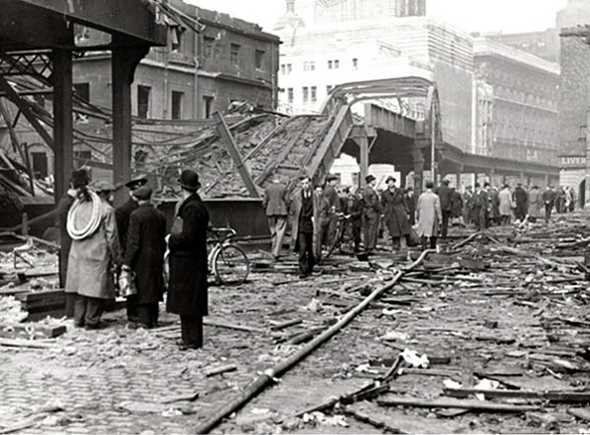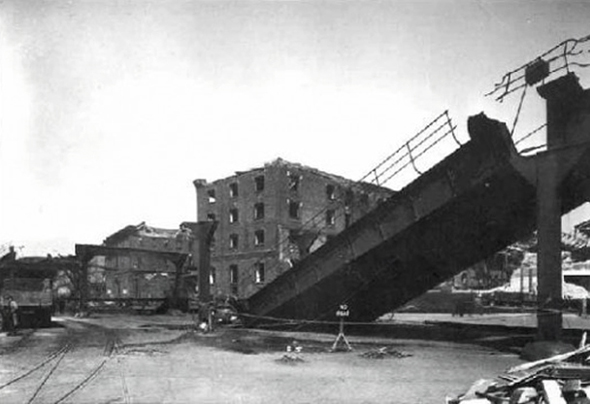When it was opened in 1893 the Liverpool Overhead Railway was the world’s first electrically-operated overhead railway. The railway ran close to the River Mersey following the line of Liverpool Docks from Dingle to Bootle. It gained the affectionate nickname of the Dockers’ Umbrella, as a great proportion of the railway was elevated and dockers could shelter beneath it as they traveled about the docks.

During World War II the Port of Liverpool was the country’s main link across the Atlantic and therefore vital for the constant supply of war materials and food. Consequently, the long sprawl of docks alongside the Mersey was a major target for the Luftwaffe. Given its proximity to the docks, it wasn’t surprising the famous Overhead Railway suffered serious bomb damage during the Blitz.
James Street station was destroyed during the May Blitz of 1941 and was consequently rebuilt on modern lines in 1942. Damage to public transport made traveling to rest centres and other emergency facilities very difficult for those caught out in the bombing.


Whenever the railway was disrupted by bomb damage, a shuttle service using buses was called into action. These vehicles carried passengers to and from working sections of track where they could resume their train journeys.
Remarkably, no trains were lost to the bombers during the war, despite regular damage to the track and buildings along the entire length of the line. Some raids took place at times of the day when the trains were still running, but even after the last night service had ended, the coaches were still vulnerable standing in their depots.


Even though there was a desperate need for steel and other raw resources for the war effort, the Dockers’ Umbrella was considered so important to the workings of the port that every effort was made to provide enough metals to repair the railway after the air raids. However, it was not until November 1941 that all the repairs had been completed and the Overhead was fully open once more.
The war placed a huge strain on the “Ovee” with a massive rise in passengers as a result of the sheer volume of trade coming through Liverpool’s docks. By 1945 it was carrying 14 million passengers, almost double the figure for 1939.



 About
About